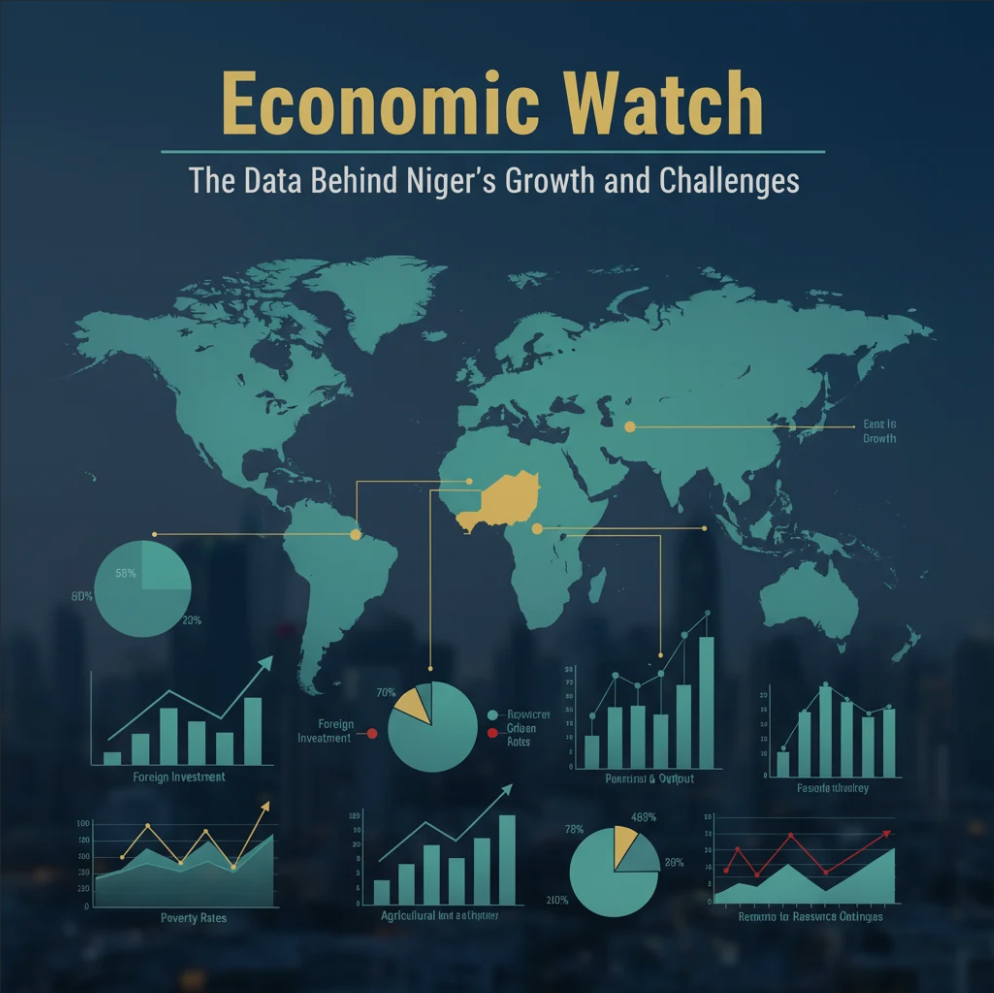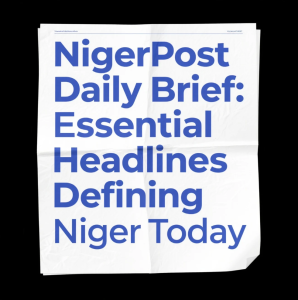Niger is often spotlighted in global development discussions — a country with vast natural resources and demographic dynamism, yet also enduring structural vulnerabilities. Recently, it has experienced dramatic swings in growth outcomes, driven by political change, commodity cycles, and governance constraints. In this “economic watch,” we examine the data behind Niger’s upward potential — and the hurdles that could derail progress.
1. Recent Growth Trends: A Roller Coaster Ride
- Niger’s full-year GDP growth surged from 2.5% in 2023 to 10.6% in 2024, demonstrating a sharp rebound. Trading Economics+2Trading Economics+2
- In quarterly terms, the economy registered 14.4% growth in Q4 2024 — the highest recorded in that series. TheGlobalEconomy.com
- Over the long run, Niger’s growth has averaged around 3.8% (1961–2024) but has become more volatile in recent years. Trading Economics+2FocusEconomics+2
- In per capita terms, growth was negative in 2023 (–1.7%) because population growth outpaced output. World Bank
- Looking ahead, the World Bank and other forecasts project 6.5% growth in 2025 and similar mid-6% rates in 2026–2027. World Bank+1
Interpretation: The swing from sluggish to rapid growth reflects strong rebounds in commodity output, easing of external constraints, and pent-up recovery demand. But sustaining double-digit growth is a steep climb.
2. Key Drivers Behind the Surge
a) Oil and Mineral Production
Niger has recently scaled up oil output, and resource revenues are becoming more central in its growth story. IMF+3World Bank+3World Bank+3
Minerals, especially uranium, gold, and other extractives, contribute significantly to export earnings — though with typical volatility. Wikipedia+2World Bank+2
b) Domestic Resilience & Informality
Niger’s large informal sector and internal trade helped cushion some external shocks, especially during sanctions and disruptions in foreign finance. World Bank+2World Bank+2
c) Sanctions, Political Shocks & Recovery
In 2023, Niger suffered sanctions following a coup, curtailing access to foreign financing — about 7.5% of GDP in external disbursements were withheld. World Bank
Despite this, the economy held onto positive growth of ~2.0% that year, thanks to countermeasures like boosting domestic production and managing public sector obligations. World Bank
d) Fiscal & Policy Measures
The government adopted tighter budget controls, prioritized domestic electricity production (in lieu of imports), and maintained public wage payments to stabilize demand. World Bank
3. Structural Constraints & Binding Challenges
i) Governance, Corruption & Institutional Weakness
Governance vulnerabilities remain a serious drag. An IMF analysis flags corruption, weak oversight, and accountability gaps as impediments to translating growth into inclusion. IMF eLibrary
ii) Education & Human Capital
Over 50% of children aged 7–16 are estimated to be out of school — indicating that the education system is under deep strain. World Bank
Expanding quality education is estimated to cost ~1.2% of GDP annually (on top of current expenditure). World Bank
iii) Poverty & Inequality
Despite growth, Niger remains among the poorest globally. In 2023, 48.4% of the population lived in extreme poverty (national line). World Bank
Food insecurity is widespread (millions affected), especially in semi-arid zones reliant on rainfed agriculture. Wikipedia
iv) Climate, Agriculture & Food Security
Niger is vulnerable to erratic rainfall, droughts, and flooding. Recent flood events displaced populations and damaged crop lands. Wikipedia
Agriculture remains central — employing a large share of the population — yet productivity gains are slow, and climatic shocks often wipe out gains.
v) External Vulnerabilities & Debt
Heavy reliance on external financing makes Niger sensitive to changes in aid, capital flows, and regional sanctions. The 2023 sanctions episode illustrates this risk. World Bank+1
Debt distress risk is considered high, especially given revenue pressures and limited domestic resource mobilization. World Bank
vi) Trade & Border Dependence
Eighty percent of Niger’s imports transit through Benin. After the 2023 coup, border and trade disruptions with Benin (downgraded relations) hurt supply chains and increased import costs. Wikipedia
Sanctions and power cuts (e.g. Nigeria cut electricity exports to Niger) also strained infrastructure and critical service delivery. AP News+1
4. Outlook: Risks, Opportunities & Policy Pathways
Growth Scenarios
- With oil production scaling, 2025–2027 growth is projected to average ~6.5–6.7%, barring major shocks. World Bank+1
- Inflation is expected to moderate: ~4.2% in 2025, eventually trending toward the WAEMU target of 1–3%. World Bank
- Extreme poverty is forecast to decline modestly (from ~52.9% in 2024 to ~50.1% in 2025) if economic momentum holds. World Bank
Key Risks & Uncertainties
- Security deterioration or resurgence of conflict could derail investment and economic activity.
- Terms-of-trade shocks (commodity price drops) could weaken export revenues.
- Delays in oil project deployment or disruptions in infrastructure could slow growth.
- Failure to restore full external financing or trade relations could restrain fiscal space.
- Institutional reforms lagging would limit inclusive growth gains from macro expansion.
Policy Imperatives
- Strengthen governance, transparency & accountability — particularly in resource sectors.
- Invest heavily in human capital, especially education and health, to raise long-term productivity.
- Diversify the economy beyond oil and mining, building resilience in agribusiness, manufacturing, services.
- Enhance climate adaptation & agricultural resilience using technology, irrigation, and better seed systems.
- Deepen domestic revenue mobilization (tax reforms, tax base expansion) to reduce dependence on external aid.
- Normalize trade relations and regional integration, especially restoring logistics through Benin and renegotiating sanction impacts.
Conclusion
Niger’s recent economic resurgence is striking — a leap from constrained growth to double-digit expansion driven by natural resources, policy responses, and domestic resilience. Yet, beneath that surface lie deep structural vulnerabilities: education gaps, governance challenges, climate fragility, and external dependencies. How Niger manages these challenges will determine whether its growth is durable — or ephemeral.
If you like, I can format this as a WordPress-friendly version, with HTML tags and SEO alignment, or turn it into a slide deck. Just say the word.




